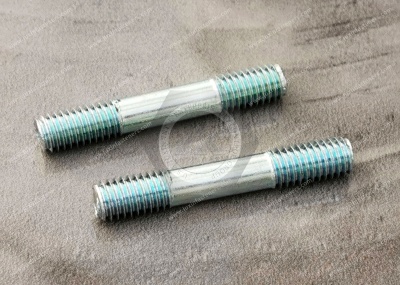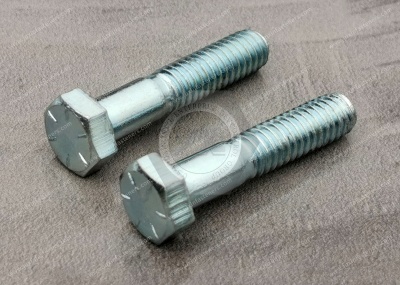Call Us
+86 136 6007 9809
Call Us
+86 136 6007 9809
Jun. 22, 2024
Function and Usage of Double-Ended Studs Industry Solutions
What is a Double-Ended Stud?
A double-ended stud is a mechanical fastener with threaded ends on both sides. Typically, it consists of two identical or different studs connected by a threaded middle section, securing and connecting parts. Double-ended studs are commonly used in mechanical equipment and structures to join two surfaces or a surface to a threaded component.
Double-ended bolts, also known as double-ended screws or double-ended studs, are used to connect machinery, providing a fixed connection. These bolts have threads on both ends, and the middle rod can vary in thickness. They are generally used in mining machinery, bridge construction, automotive, tower construction, boiler steel structures, large-span steel structures, and large buildings.
Left-Hand to Right-Hand Male Thread Adapters: Made from black-oxide steel, these adapters resist corrosion in dry environments. The thread length is the same on both ends.
Threaded on Both Ends Setup Studs: Known as setup studs, these studs withstand sideways forces better than fully threaded studs because they have a strong unthreaded middle, The unthreaded middle also makes more contact with unthreaded holes, creating better alignment than a fully threaded stud.
DIN 938—Thread Length (B) includes chamfer on DIN 938 studs. Studs that meet DIN standards meet dimensional and material requirements.
DIN 939—Studs that meet DIN standards meet dimensional and material requirements.
If you need high-quality double-end studs or technical support for your projects, please get in touch with us. Email: adelajonly@gmail.com
Website: https://www.juxinfasteners.com


Structural Characteristics of Double-Ended Studs
The structure of double-ended studs is relatively simple. They consist of two identical threaded heads and a threaded shaft connecting them. The heads, the actual threaded parts, are inserted between the components to be connected, while the threaded shaft acts as the connector between the two heads. Generally, both heads of the double-ended stud have threads, allowing for securing and connecting functions.
Key structural characteristics of double-ended studs include:
1. Short length
2. Threaded ends with equal diameters
3. Different threads at the upper and lower ends of the stud
Functions of Double-Ended Studs
Double-ended studs, commonly called double-ended bolts, typically have threads on both ends and a smooth middle section. The main uses of double-ended studs include:
1. Connecting large equipment and Accessories, such as sight glasses, mechanical seal seats, and gear reducer frames. Using double-ended studs facilitates the frequent removal and installation of accessories, reducing thread wear and damage.
2. Connecting Thick Objects: Ideal for situations requiring long bolts.
3. Connecting Thick Plates and Areas Where Hex Bolts Are Inconvenient: For example, in concrete roof trusses.
Double-ended studs play a crucial role in mechanical manufacturing and connections. They are simple in structure, easy to use, and can improve connection speed while reducing labor intensity. Their primary functions include:
1. Connection: Used to connect various components.
2. Fixation: Securely fix various components in mechanical structures to ensure tight connections.
3. Adjustment: Allow for adjustments of the relative positions of components after connection, achieving better results.
How to Choose and Use Double-Ended Studs
When selecting and using double-ended studs, consider the following points:
1. Choose studs based on the characteristics of the connecting components to ensure tight, secure connections.
2. Ensure the studs resist corrosion, tensile stress, and wear Select different materials and models according to varying working conditions.
3. To avoid connection failures during use, determine the components' relative positions, angles, and forces to be connected beforehand.
Anti-loosening measures must be taken to prevent double-ended bolts from loosening due to vibrations, load changes, and high-temperature creep during actual work. Otherwise, normal operation could be affected, leading to accidents.
Double-ended studs are essential mechanical components in mechanical connections and structures. Proper selection and use based on the components' characteristics, working conditions, and requirements can achieve better connection effects.
Contact Us
Tel.:
+86 020 8621 0320
+86 020 3121 6067
Technical Support:
Navigation
SEND INQUIREY